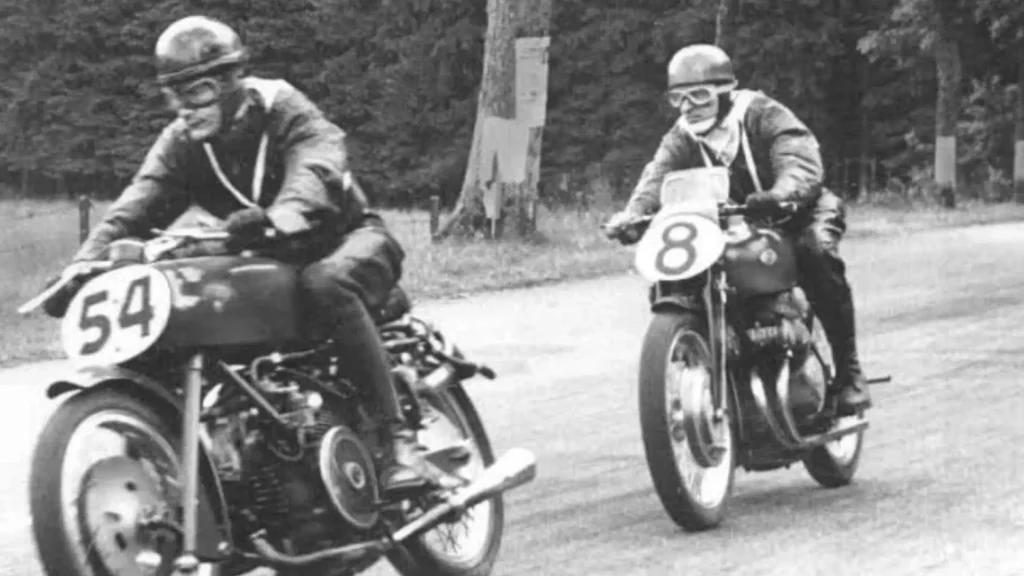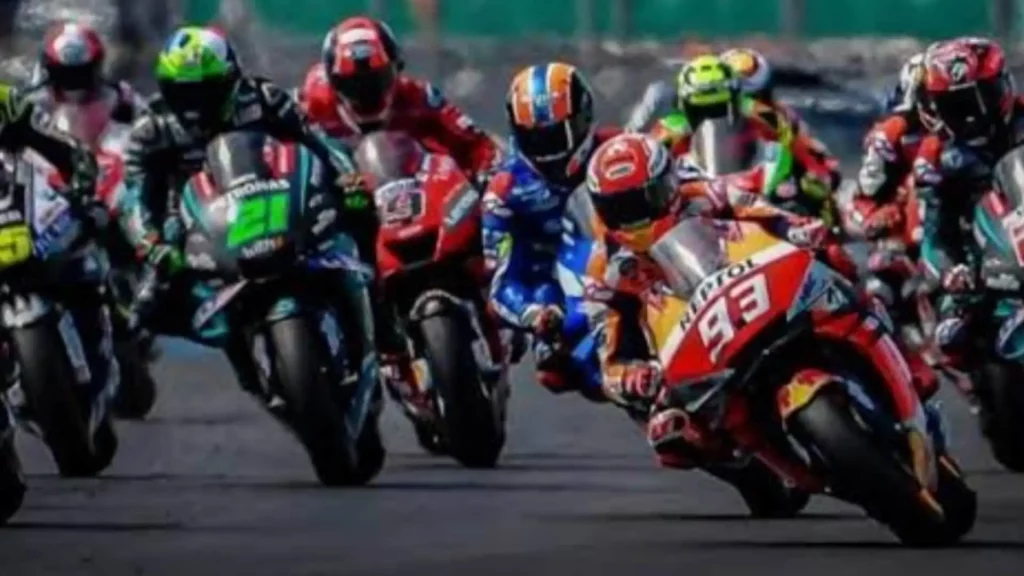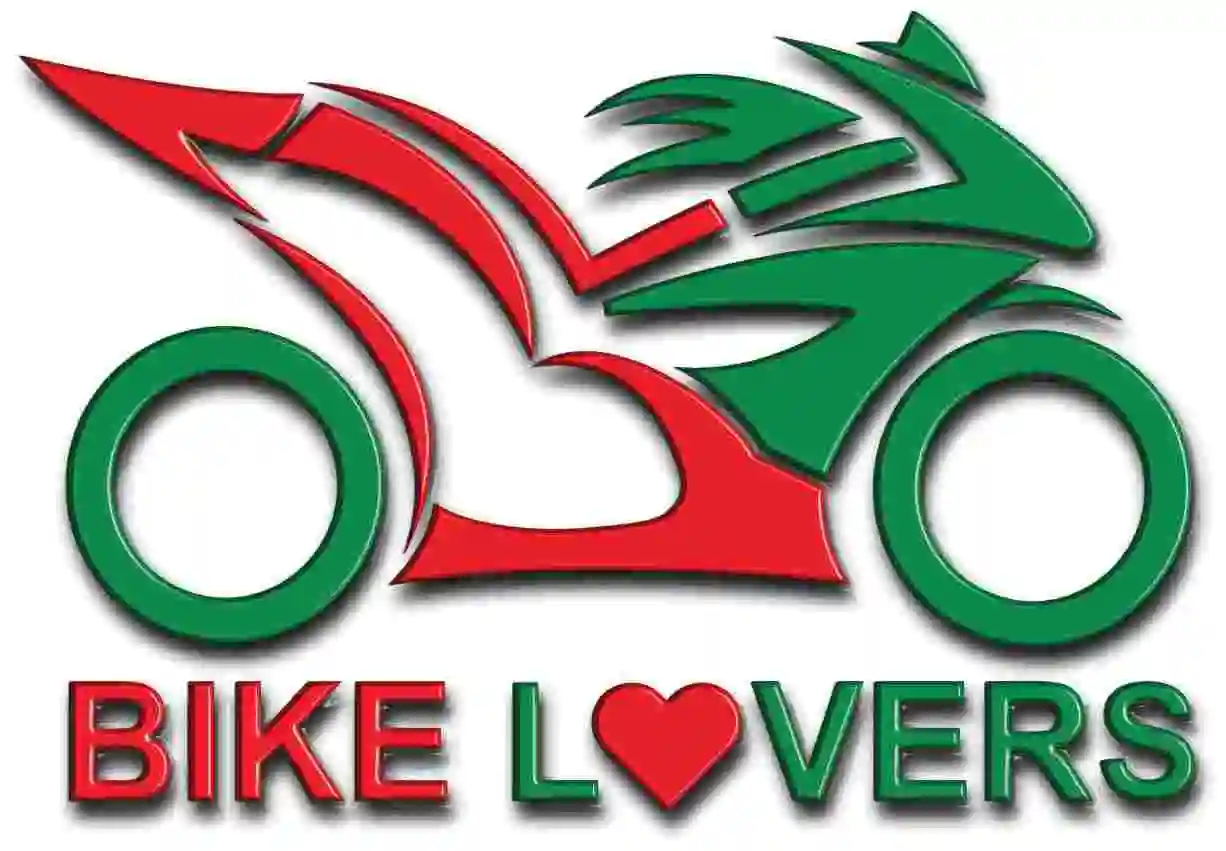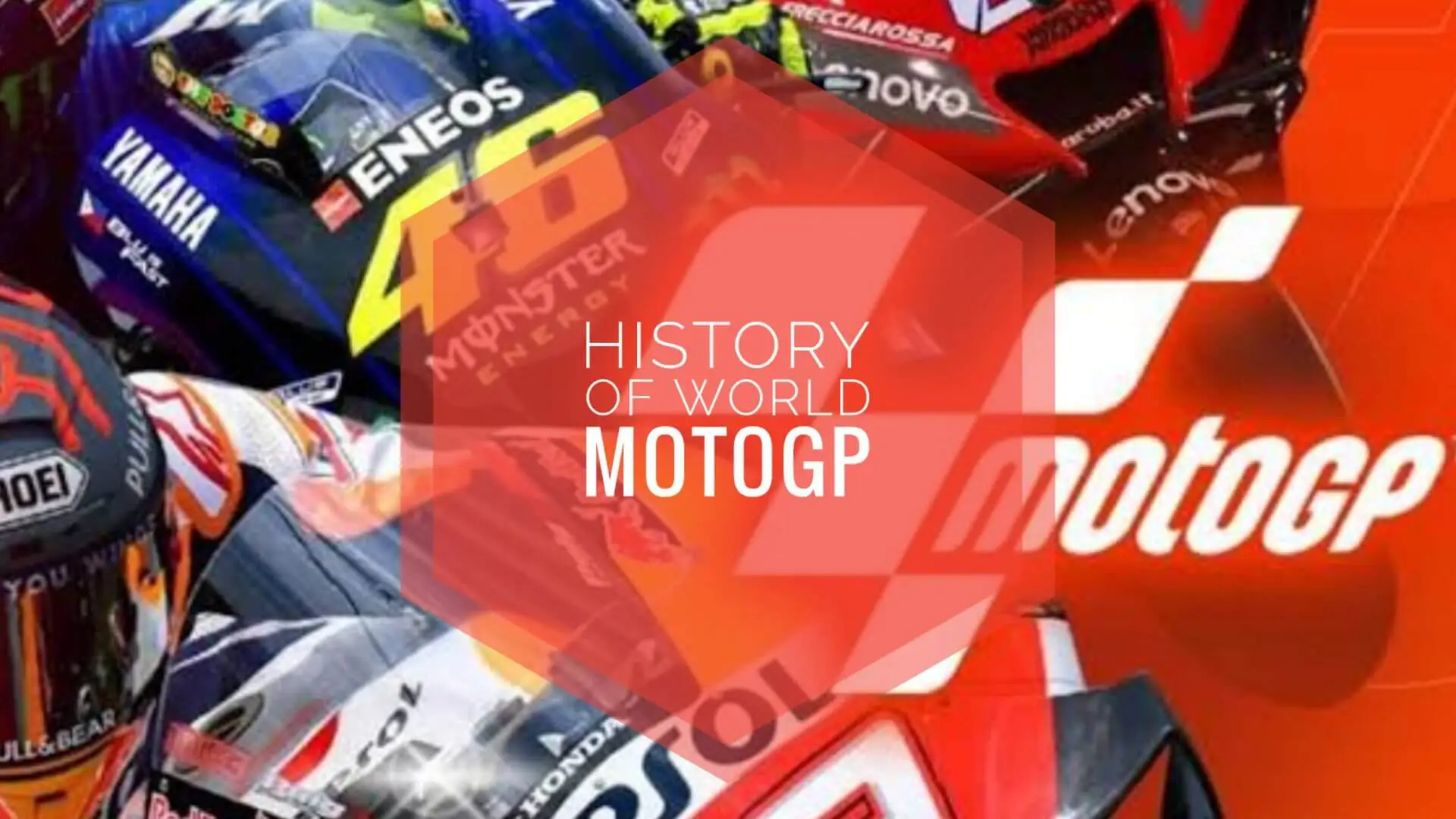The first world championship was held in 1949 and was organized by the sports governing body, the Federation Internationale de Motorcyclisme (FIM). Refers to a series of championships held in 1938, before the Second World War, and a European series held that year consisting of eight races and including Isle of Man TT, Dutch TT and Grands Prix in Belgium, France, Germany and Switzerland.
This is the view about 75 years of MotoGP
The representative is not complete but the champion who won the GermanMotoGP Logo credit Facebook was Georg Meier (500cc) and Ewald Kluge (250cc) and the British Ted Mellors (350cc). Kluge earned the title of European Champion by scoring more than any other rider in all three classes.
European Dominance
The following year saw Italy, through Gilera, follow the German example in acquiring sports cars while Norton withdrew from racing in order to concentrate on preparing machines for use by the military. The European Championship was planned to be held over 9 rounds but was eventually reduced to 7 due to the outbreak of war and motorcycle racing went dormant for 6 years.
So, when racing continued in 1946, the seeds were planted for a championship although it remains a mystery why the idea was abandoned in 1947 and 1948 and racing continued. Then do but now stand alone.
However in 1949, the FIM decided to re-introduce the idea of a series of series and add the extension of prestige to their decision by baptizing them in the World Championship. This was the beginning of the Grand Prix World Championship as we know it today and a new era for international motorcycle road racing.
A new turning point of international racing
That first year of 1949 may have been a shadow of the recent World Championship but it was a start to six races for the 500cc class, five for the 350s, four for the 250s and just three for the 125s. and sidecars. The 1950s saw British manufacturers dominate before the Germans and Italians took over but the 1949 500cc and 350cc titles went the way of British riders, Les Graham and Freddie Frith , and the manufacturers, AJS and Velocette. The Italians had more success in the junior classes, which was a first indication of their future strength.
In the end the British machines were successful because of their reliability but the speed of the Gileras was clearly visible and Norton had to respond to the challenge. They had first success with Geoff Duke giving them three titles in 1951 and 1952, the Brit also causing a stir when he ran on single tires instead of the usual the two bags.Duke’s ride and the technical genius of Norton’s Joe Craig, along with the ‘Featherbed’ design kept them on top but it was short lived and the Italian soon adopted multi-cylinder engines from Gilera and MV Agusta. They recruited the best British talent with Duke (Gilera) and John Surtees (MV Agusta) giving them the 500cc World titles while Moto Guzzi enjoyed 350cc success with Bill Lomas.
As the British effort faded, the Italians took over and although the sport was rocked at the end of 1957 when Gilera, Mondial and Guzzi all left, MV Agusta remained in control of the Championship. the World and Surtees took the 350cc-500cc twice in 1958-1960. and Italy’s Carlo Ubbiali and Tarquinio Provini in the action class of the 125cc-250cc field. Meanwhile, BMW was the dominant force in Sidecar racing and would win all the world titles between 1954 and 1967.Back in the parade and just when it looks like MV Agusta will reign for years to come, and the World Championship has lost some of its credibility, a big challenge came from a quarter unexpected – Japan.
Lets dig the deep of MotoGP…..

1949: Birth of the MotoGP(unofficial)
In 1949 FIM[old name of MotoGP] was founded. It organized what would be the first true championships for 125cc, 250cc, 350cc and 500cc motorcycles (oh, and 600cc sidecars), with the first race being held on the already famous Isle of Man TT course. British driver and former Lancaster Bomber driver Leslie Graham won her first ever 500cc title on a British-made AJS machine. His native, Freddie Frith, won the inaugural 350cc title on a Velocette.
1950-1975:Italian supremacy
In the first 26 years of the 500cc class of Grand Prix motorcycling, the Italian manufacturers have won the title 24 times. MV Agusta and Gilera led Giacomo Agostini, John Surtees and Mike Hailwood to multiple world championship victories.
In the other classes, however, the competition was much fiercer and manufacturers such as Honda, Suzuki, Norton and NSU managed to win their titles.
1961: Two-stroke conspiracy and the flourishing of Japanese teams
In the 1950s, East German manufacturer MZ began developing a revolutionary two-stroke engine that produced a whopping 200 hp. The team has achieved some famous victories against bigger teams in the 50cc, 125cc and 250cc championships with superstar driver Ernst Degner.
How ever in 1961, Degner was offrering a agreement with the Japanese manufacturer’s Suzuki. The truth is still shrouded in mystery, but Degner managed to defect from the Socialist German Democratic Republic with knowledge of MZ’s two-stroke technology. Then he helped the Japanese team develop what would become the modern two-stroke motorcycle engine.
Late of 1960: Power cutting and Cost
The 1960 saw Giacomo Agostini win four of his eight 500cc worldwide titles and two of his eight 350cc championship. Italian bikes were still the fastest in the premier class, but in 1966 Honda became the first Japanese manufacturer to win a 500cc Grand Prix. Yamaha and Suzuki were also starting to win races and titles in the other classes. Despite stiff competition, in 1967 the FIM decided that the increase in bicycle production costs had to be curbed. This move angered the Japanese factory teams and Honda, Suzuki and Yamaha left Grand Prix motorcycle racing, leaving MV Agusta to dominate the 500cc class.
1975: Japanese supremacy
In the early 1970s, Yamaha, Honda and Suzuki all won races and titles in the 125cc and 250cc categories. However, it wasn’t until 1975, when Agostini won his last 500cc title on a Yamaha, that a Japanese manufacturer managed to reach the top of the motorcycle racing world.
Agostini’s title victory opened the doors. The following year, Barry Sheene won the 500cc crown on a Suzuki, starting a period of domination that saw the Japanese manufacturers win all the titles between 1975 and 2007. The spell was broken – briefly – by the victory. of Casey Stoner’s MotoGP title on a Ducati.
1979: Honda returns with four-stroke technology
After abandoning the sport in 1967, Honda returned to premier-class motorcycle racing in 1979. In an effort to do things differently, it went against the grain by opting for a four-stroke engine instead of the now popular two-stroke. The result? Not good. The Honda four-stroke didn’t make an appearance until the 1979 British Grand Prix – the eleventh race of the season – where both Honda bikes promptly retired.

2000s: the official birth of MotoGP
After Honda’s dominance of the 500cc Grand Prix in the 1990s, the new millennium has seen tremendous changes in the sport. Valentino Rossi won his first 500cc premier class title in 2001, and then the following year, the sport was officially renamed MotoGP.
The rebrand has seen radical changes and new technical regulations. Four-stroke engines were reintroduced and the size of the premier class MotoGP bikes increased to 990cc. Rossi went on to win the MotoGP title he just had for four consecutive years between 2001 and 2005.
In 2007 the technical regulations of the MotoGP were changed again, lowering the displacement to 800 cc. The Australian Casey Stoner took full advantage of this, winning the title with the Italian manufacturer Ducati and breaking the three-decade dominance of Japanese cars.
2012 and 2016: technical changes
For the 2012 season, the MotoGP bikes have been raised to 1,000cc, ushering in a new era of domination by Spanish riders and a new rivalry between Jorge Lorenzo and Marc Márquez.
In 2016, Michelin replaced Bridgestone as the sole tire supplier, and changes to the bike’s onboard hardware and software packages helped level the playing field. That year, there was a record of nine different Grand Prix winners.
Before his younger son took over, Jorge Lorenzo won in 2012 and 2015 with Yamaha. Marc Márquez became the youngest MotoGP champion in 2013, however, and enters the 2019 championship season, he has five titles to his name.
With Lorenzo joining Marquez at Honda, 2019 promises an exciting new chapter in the evolution of MotoGP.

